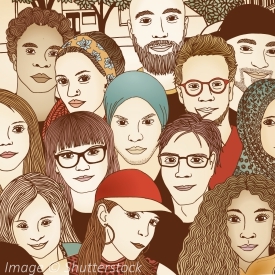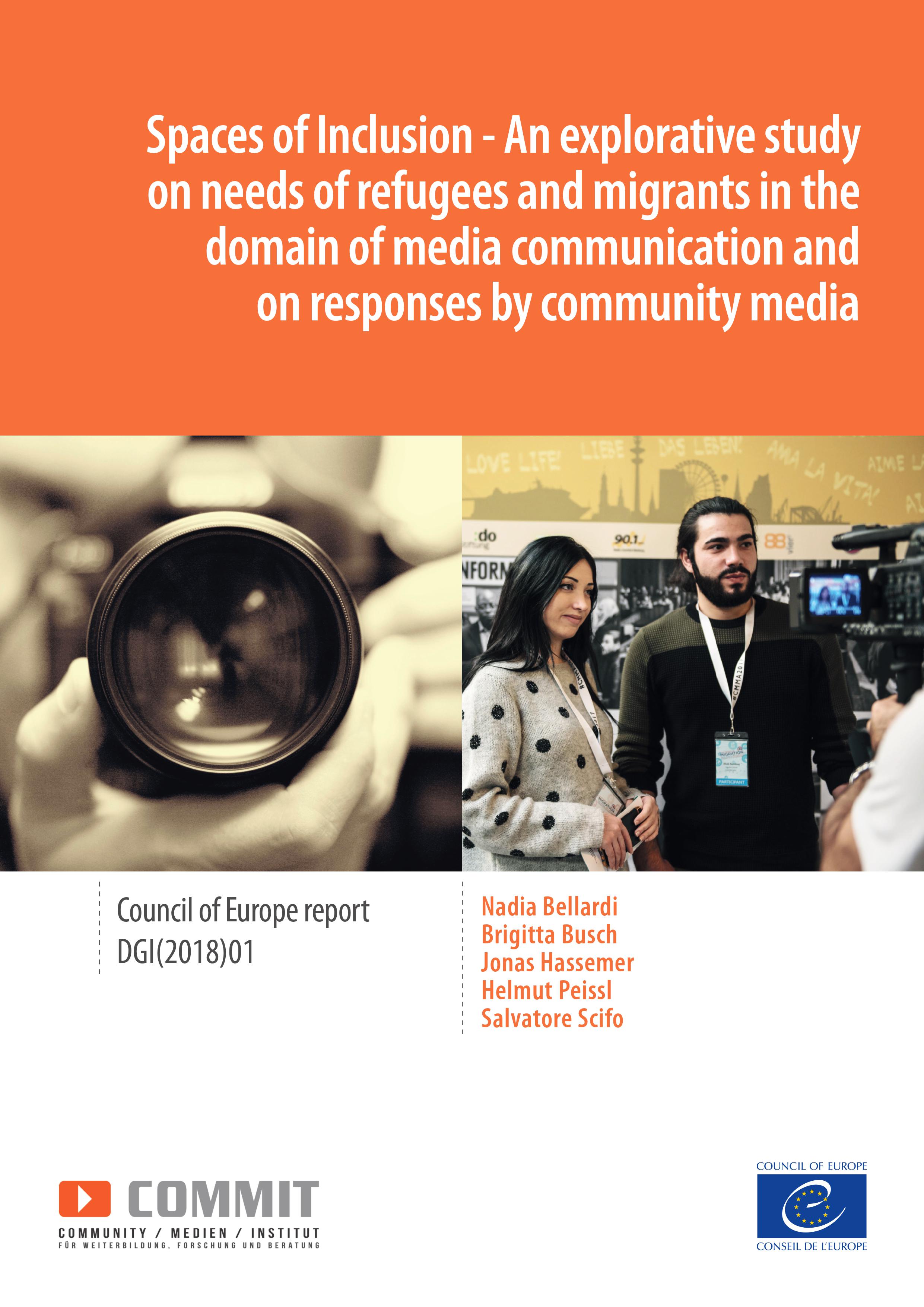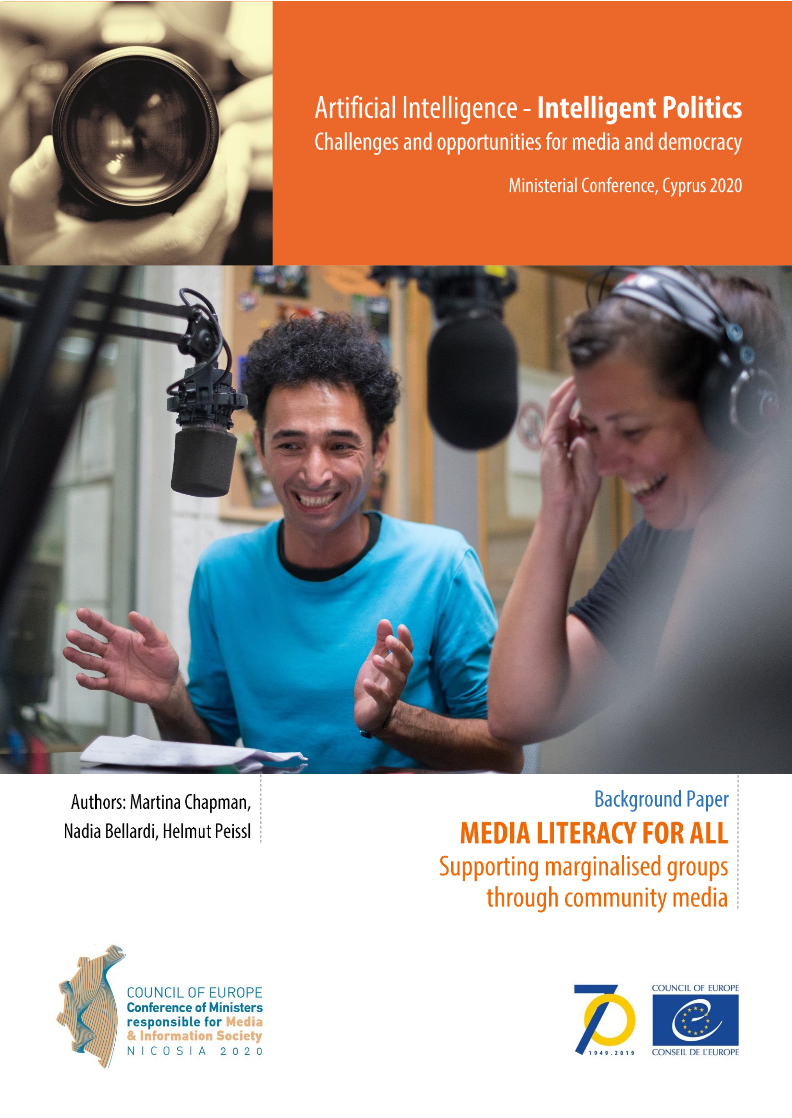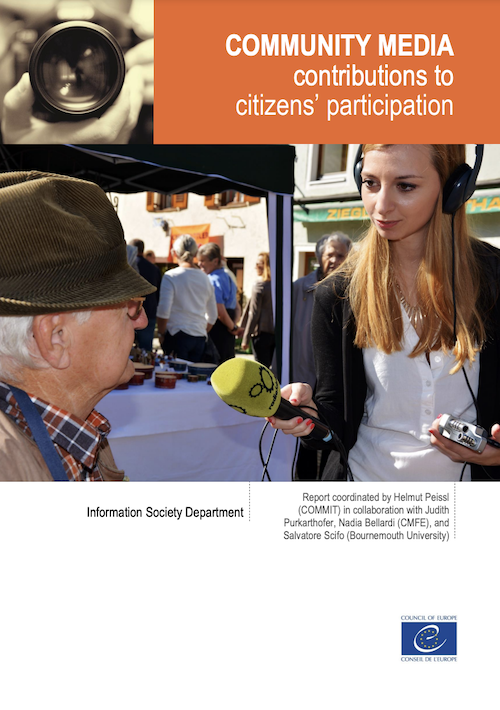Community media

It endorses the commitment of community media to media and information literacy, through the development of critical and creative thinking and active participation in media content production.
Recommendation on promoting a favourable environment for quality journalism in the digital age (2022) in upholding media diversity as a basis of quality journalism encourages States to develop and promote a range of funding schemes and instruments, including at the local level. This may include the availability of public funds for the provision of local news in the public interest, and other measures to ensure that community media, as well as other types of independent media serving local and rural communities, have the space and adequate resources to operate on all distribution platforms.
Recommendation on media pluralism and transparency of media ownership (2018) the Committee of Ministers most recently invites member states to support the establishment and functioning of minority, regional, local and not-for-profit community media, including by providing financial mechanisms to foster their development.
The Committee of Ministers Recommendation on media pluralism and diversity of media content (2007), encouraging the development of community, local, minority or social media, capable of making a contribution to pluralism and diversity and providing a space for dialogue that integrates all communities and generations.
The Committee of Ministers Declaration on the role of community media in promoting social cohesion and intercultural dialogue (2009), calling on member states to give legal recognition, access to spectrum (analogue and digital), and structural support and funding to the community media sector.
The Council of Europe study Spaces of Inclusion - Needs of refugees and migrants in the domain of media communication and on responses by community media (2018) explores the media habits and particular needs of refugees and migrants. Good practice examples show how community media can meet their communicative needs by offering training and spaces for self-representation through multilingual and interactive formats, as well as facilitating entry into local networks. Across Europe and beyond, community radios and TVs give volunteers the opportunity to discuss topics of civic concern, tell their stories and report on issues that matter to them and to the people they live with in their neighbourhoods. In these inclusive sites for dialogue, issues such as loneliness and fear of poverty, polarisation and disinformation campaigns can be addressed.
This background paper explores how the community media sector promotes media literacy and how this work can strengthen marginalised communities' participation in community media and beyond, with a view to informing and inspiring practitioners and policy-makers.
A common thread stretching across community media is empowering community groups with the access and skills to create their own communication channels which meet the specific needs of their community and foster participation in the public sphere in a structured and professional manner. As a result, many community media projects and activities promote the direct empowerment and participation of communities who are typically absent from public debate.
Community media take the form of broadcasting and/or multimedia projects and share some of the following characteristics: independence from governments, business companies, religious institutions and political parties; not-for-profit orientation; voluntary participation of civil society members in the devising and management of programmes; activities aiming at social gain and community benefit; ownership by and accountability to local communities and/or communities of interest which they serve; commitment to inclusive and intercultural practices. Community media are civil society organizations, usually registered as legal entities that offer and encourage participation at different levels of their structures. Also referred to as “third media sector”, community media have a clearly distinct identity alongside national public service media and private commercial media.
As alternative and complementary channels of media production and distribution, community media facilitate active citizenship and political participation for all. They serve diverse communities and involve thousands of volunteers in multilingual media productions, in training and in management - with women, marginalized groups, artists, journalism students, citizens, some with a migrant or refugee background, non-mainstream DJs, youth and elderly people actively at the forefront.
Community media organizations are an important part of the fabric of democratic societies, yet in many European countries they still lack formal, legal recognition, fair access to distribution platforms and sustainable funding. Funding typically comes from public sources, volunteers’ contributions, participation-based training and grants for social-impact projects. In reality, however, and due to the lack of clear recognition and status for community media, special public funds for community media, where they exist, risk to be easily removed or diverted to other media entities, including private and profit-oriented projects.
Access to adequate distribution technologies is challenging for community media who are usually small-scale broadcasters who depend on affordable rates for author rights, terrestrial frequencies and bandwidth on digital platforms. In most European countries, the necessary technical equipment is obtained through in-kind donations and work is done mainly by volunteers. Audio and video broadcast services provided by community media are often undervalued and underpaid, and rarely given due prominence on digital platforms.

"Everyone has the right to freedom of expression"
Art. 10 European Convention on Human Rights





